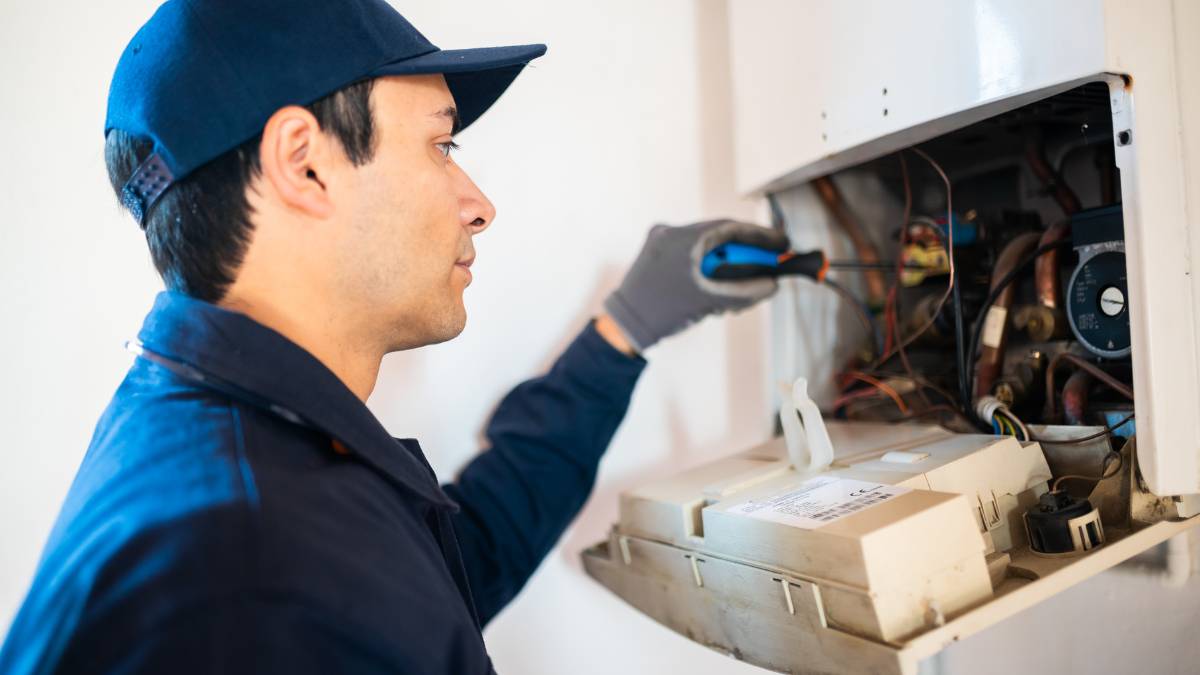Last Updated on January 15, 2024 by Kravelv
Navigating the costs associated with heating repairs takes financial commitment and endurance, but there are ways that homeowners can mitigate repair expenses. One such method is regular professional maintenance visits, which can address minor issues before they become major ones.
Homeowners should also be mindful that DIY repairs may lead to expensive complications, and it is wiser to seek guidance from professional technicians.
Dealing with the financial aspects of heater repairs can be tricky. For reliable heating repair services, consider checking out River Valley AC!
Cost of parts
Step one in determining the cost of heater repairs is identifying which parts need to be replaced. A heating element could break due to various causes, such as power surges that burn it out or mineral build-up that prevents it from functioning correctly; usually, replacing one costs around $20.
The thermostat is another part that could go down; depending on the make and model, repairs or replacements might run from $100 to $200. A thermostat acts as a temperature-activated switch that turns on heating elements to increase water temperatures.
Relighting the pilot light may be enough to resolve a thermostat issue for many homeowners; if that does not do the trick, however, this could indicate a malfunction with your thermocouple or gas control valve.
Other common heater components that may break down include the circuit board, which acts like the “brains” of your system and regulates everything; should it malfunction, energy costs will soar, and other issues may arise.
Other potential failure points include the dip tube that transfers cool water from the top of your tank down into your storage vessel so it can be reheated and the pressure relief valve (which helps lower tank pressure).
Anode rods are critical in protecting water heaters against corrosion and prolonging their service lives. Replacing an anode rod is relatively inexpensive; therefore, it should be done every five years to maximize performance.
The dip tube is an essential element of your hot water delivery system; it transfers cool water from the top of the tank down into its lower element for reheating. Regretfully, this pipe might deteriorate over time and require $20 on average to replace.
Cost of labor
Homeowners need to factor labor costs into their heater repair costs as well. This figure depends on the complexity and type of repair. Furthermore, the make and model of the heater can substantially affect labor expenses.
Professional labor costs for cleaning draft inducer motors can often exceed those associated with simple repairs and may increase at specific times or after business hours.
Thermocouples – which detect pilot light activity and release gas control valves – can become hard to relight after becoming worn out, leading to gas leakage issues and necessitating immediate replacement of this part.
A number of factors influence the cost of repairs for heaters. For instance, self-contained heaters with easy access will usually cost less to fix than units located behind walls or crawl spaces that take more effort and time for contractors to access them.
Cost of equipment
Equipment plays a big part in determining how much heater repair will cost. Depending on its age, upgrading may be required, which could prove costly if multiple components need replacing. To get an accurate assessment, professional HVAC technicians should evaluate your equipment to see if an upgrade may be necessary.
It might be time for an upgrade if your system continues breaking down or if your repair bills are rising. New units tend to be more energy saving than their older counterparts. While installation might initially cost more, utility bill savings quickly compensate for additional expenditures.
Certain heating issues, like replacing an air filter or turning up the thermostat, are doable DIY projects, but others require expert assistance.
Cost of installation
Most homeowners may manage simple repairs and maintenance tasks at home, such as changing an air filter or installing a smart thermostat. In contrast, more complex tasks may need professional HVAC expertise, such as replacing furnaces or relighting pilot lights.
While such DIY tasks might work for simple issues like these, hiring an HVAC specialist for more complicated issues often provides better value in terms of cost savings.
Installation costs for HVAC units depend heavily on factors like brand, brand location and ductwork design. Do your research before selecting an experienced and trustworthy contractor; consider investing in a service plan with priority booking and labor cost coverage as part of its benefits.

